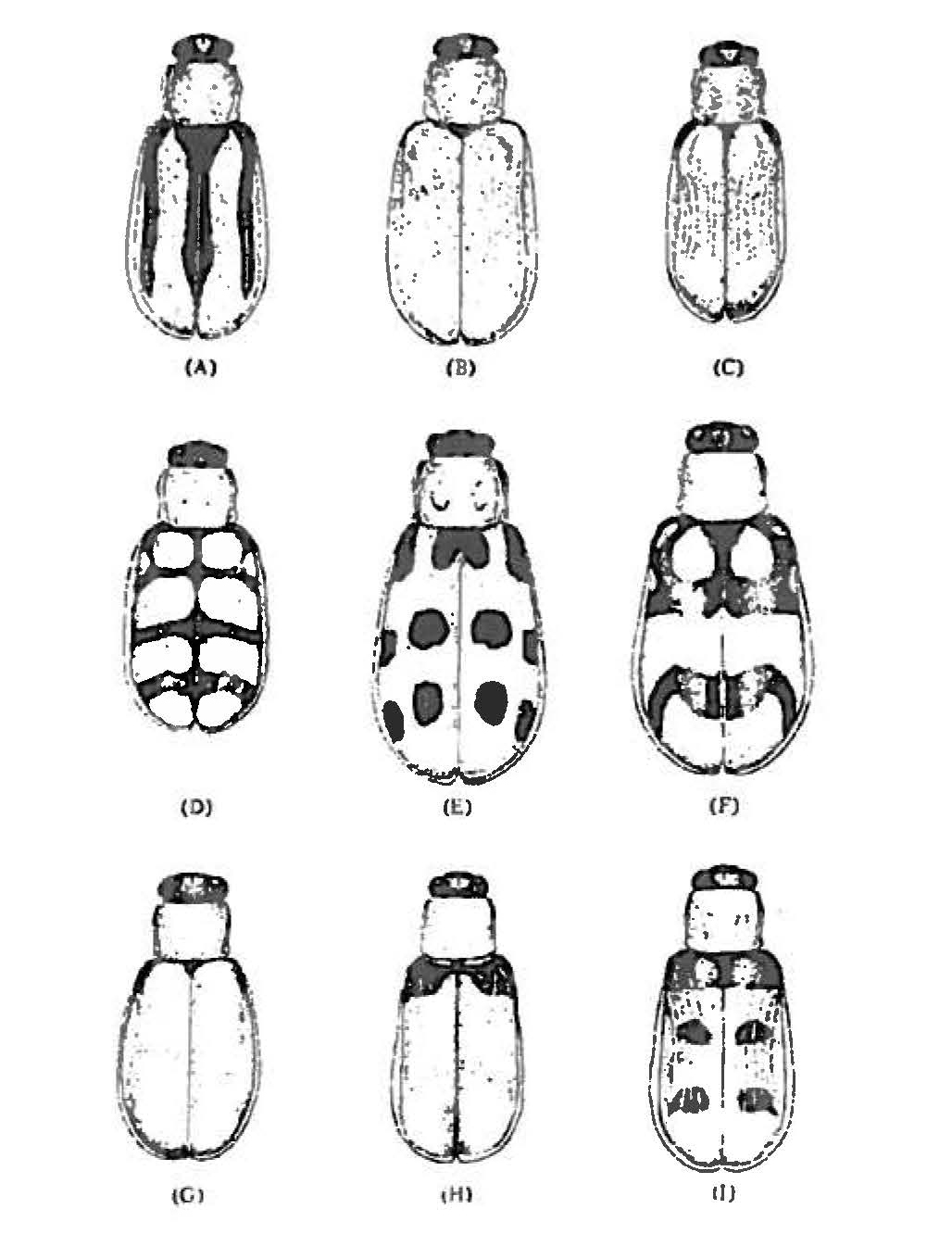Identification key for Diabrotica species
The following identification key for Diabrotica species has kindly been provided by Dr Chandler (USDA-ARS, Northern Grain Insects Research Laboratory, Brookings, South Dakota) with permission from the author Dr Krysan. Although this key only concerns the New World genus Diabrotica and not other Chrysomelidae present in Europe, it was felt that this key could help in identifying Diabrotica virgifera (EPPO A2 quarantine pest) among insects caught in traps or found in maize fields, and in verifying that other American Diabrotica (A1 quarantine pests) have not appeared in Europe.
1 Elytra in part pale, yellow or green........2
Elytra entirely dark: 4-6 mm long........D. cristata (Harris)
2 Pronotum pale, yellow or green........3
Pronotum black........D. lemniscata LeConte
3 Elytra with longitudinal carinae on the disk........4
Elytra lacking discal carinae........8
4 Femora black or pale with outer edge tinged with black........5
Femora green or yellow; not marked with black........6
5 Elytra with black vittae from humeral angles and on the suture, often covering most of the elytra; beetle usually yellow and black D. virgifera virgifera (WCR) (Fig. 1A)
Elytra entirely pale or with a narrow piceous vitta extending posteriorly from the humeral angle; beetle largely green D. virgifera zeae (MCR) (Fig. 1B)
6 Antennae (except proximal segments), clypeus, tibiae, and tarsi infuscated, often black........7
Antennae, clypeus, tibiae, and tarsi, yellow or testaceous; humeral vittae if present very weakly colored ; ; ; ;D. barberi (in part) (Fig. 1C)
7 Scutellum usually black........D. longicornis (Say)
Scutellum yellow or testaceous........D. barberi (NCR) (in part)
8 Elytra with black markings........9
Elytra without black markings; green with yellow transverse bands........D. balteata (BCB) (Fig. 1D)
9 Elytra with 11 black spots........D. undecimpuctata sensu lato 10
Each elytron with a basal black area enclosing a pale spot and an arcuate transverse black band in the apical third D. tibialis LeConte
10 Legs and abdomen entirely black........D. undecimpunctata undecimpunctata (WSCB)
Abdomen pale, legs in part pale........11
11 Spots black and rather large; form robust........D. u. howardi (SCR) (Fig. 1E)
Spots smaller and brownish; form less robust........D. u. tenella LeConte

Figure 1. (A) Diabrotica virgifera virgifera, western corn rootworm. (B) Diabrotica virgifera zeae, Mexican corn rootworm. (C) Diabrotica barberi, northern corn rootworm. (D) Diabrotica balteata, banded cucumber beetle. (E) Diabrotica undecimpunctata howardi, southern corn rootworm (spotted cucumber beetle). (F) Diabrotica adelpha. (G) Diabrotica speciosa. (H) Diabrotica viridula (variation). (I) Diabrotica viridula (variation).
Sources
Krysan, J.L. (1986) Introduction: Biology, Distribution and Identification of Pest Diabrotica.
In: Methods for the Study of Pest Diabrotica. (Ed by Krysan, J.L.; Miller, T.A), pp 1-23. Springer-Verlag, New York.
